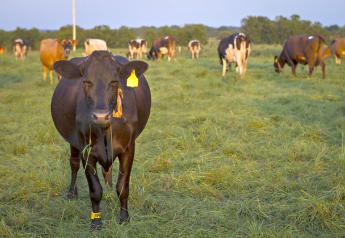USDA: Much of the HRW Wheat Crop Exposed to Weather Extremes

USDA's Joint Ag Weather Facility says on the Plains, cold weather is generally confined to the Dakotas, eastern Montana, and northeastern Nebraska. Elsewhere, mild, dry conditions prevail, USDA adds. "Much of the hard red winter wheat crop is poorly established and remains exposed to potential weather extremes," USDA explains.
In the West, USDA says chilly conditions linger across the interior Northwest, while showers are spreading inland across northern California and the Pacific Northwest. "Elsewhere, mild, dry weather favors mid-winter fieldwork, including small grain planting in the Desert Southwest," USDA explains. Nearly three-fourths of Arizona's durum wheat had been planted by Jan. 20, USDA adds. However, drought remains a serious concern in the Southwest with respect to water supplies and rangeland conditions; 74% of Arizona's rangeland and pastures are rated very poor to poor, according to USDA.
In the Corn Belt, USDA says frigid conditions are maintaining stress on livestock, especially in the upper Midwest. "This morning's temperatures fell below 0°F in much of Minnesota and Wisconsin," USDA details. Snow showers persist downwind of the Great Lakes, and a narrow band of light snow stretches from southern Minnesota into northern Illinois, USDA continues.
In the South, cool conditions in most areas contrast with a warming trend in the western Gulf Coast region, USDA reports. "Freeze warnings were in effect early today in parts of northern Florida, but the state's citrus and winter vegetable regions remained safely above 32°F," USDA elaborates.
In its outlook, USDA says cold weather will persist through week’s end in the Midwest and Northeast, followed by a warming trend. "Meanwhile, mild weather will return to the Deep South late in the week, while generally above-normal temperatures will prevail from the Pacific Coast to the High Plains," USDA explains. However, cooler air will begin to overspread the West by early next week, USDA continues. "During the next five days, precipitation will remain scarce across the nation’s mid-section," USDA reports. However, a late-week storm will produce light precipitation across the eastern one-third of the U.S., while widespread rain and snow showers will develop west of the Rockies, according to USDA.







